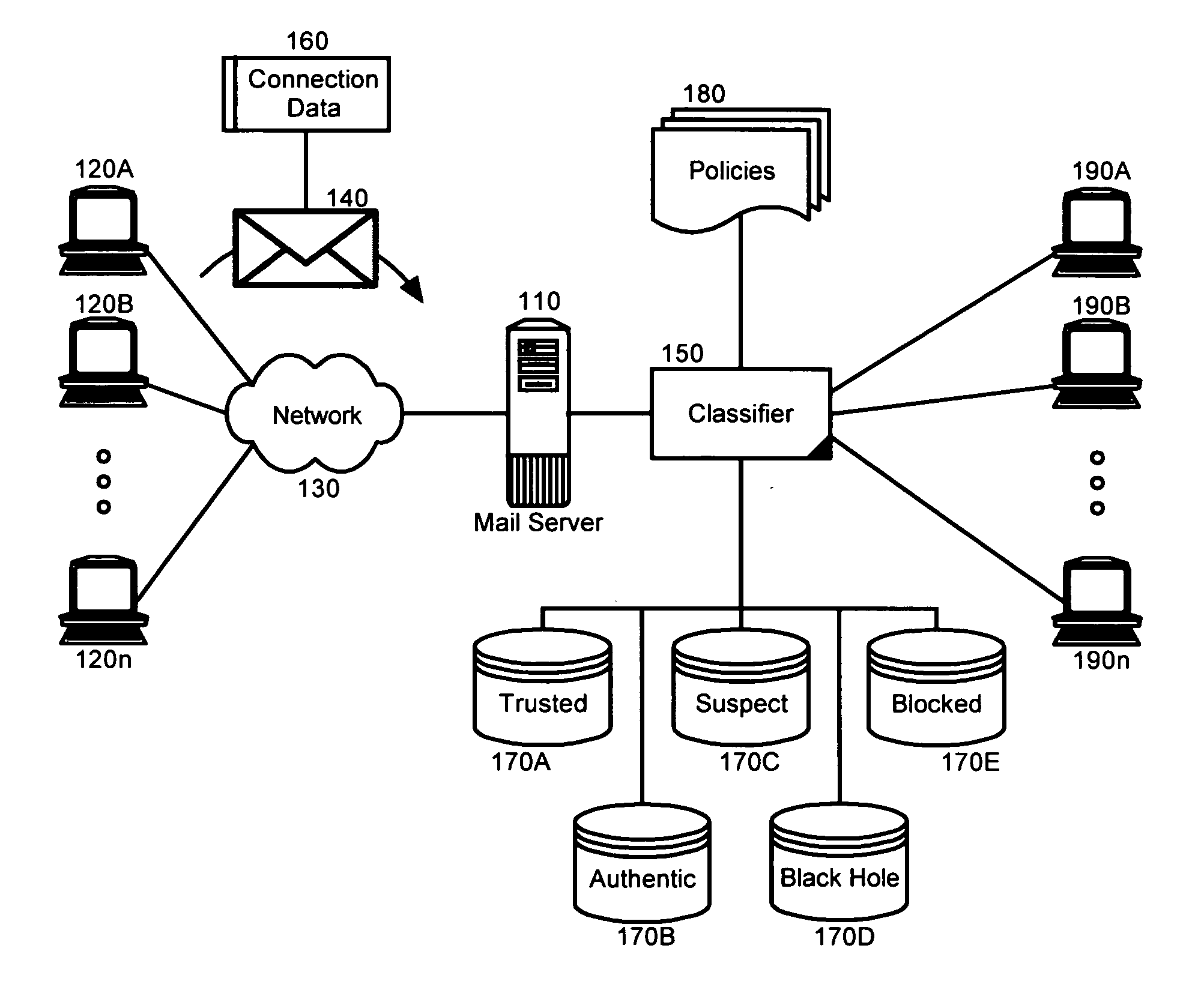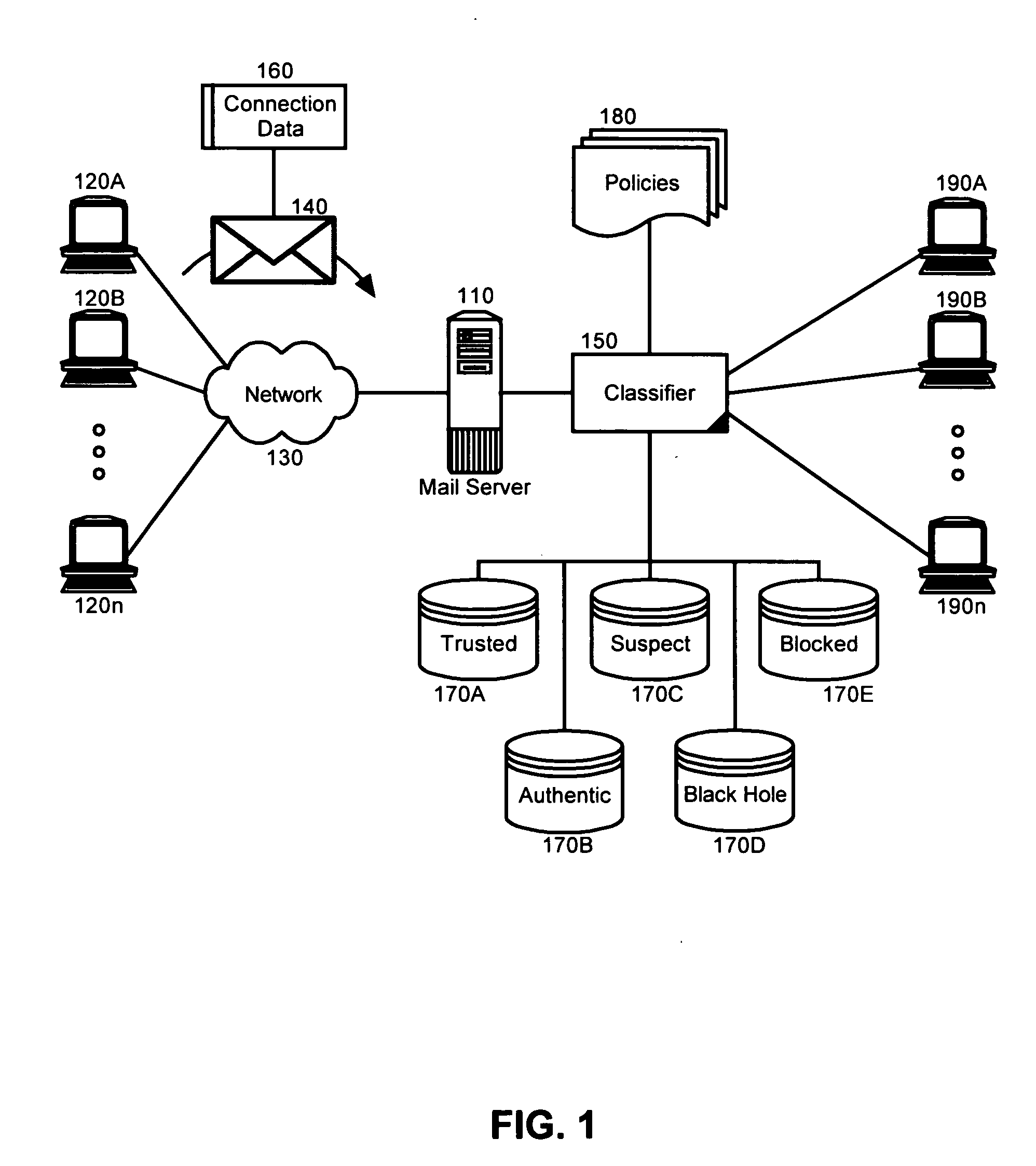Classifying e-mail connections for policy enforcement
a technology for e-mail connections and policy enforcement, applied in the field of processing electronic mail, can solve the problems of unsolicited electronic mail remaining an annoyance to consumers worldwide, junk mail recipients generally finding the practice annoying, and high postage costs
- Summary
- Abstract
- Description
- Claims
- Application Information
AI Technical Summary
Problems solved by technology
Method used
Image
Examples
Embodiment Construction
[0015] The present invention is a system, method and apparatus for classifying and processing process incoming electronic mail messages based upon associated policies. In accordance with the present invention, prior to delivering an electronic message to a mail client, the incoming electronic message can be classified based upon the source of the incoming message. A policy associated with the classification can be used to determine how to process the incoming message. For instance, at one extreme a policy can indicate that all messages associated with a trusted classification are to be delivered, while at another extreme, a policy can indicate that all messages associated with a blocked classification are never to be delivered. In this way, spam can be intelligently handled uniformly and automatically without regard to the varying nature of disparate electronic mail clients.
[0016] In further illustration, FIG. 1 is a schematic diagram of a mail processing system configured to class...
PUM
 Login to View More
Login to View More Abstract
Description
Claims
Application Information
 Login to View More
Login to View More - R&D
- Intellectual Property
- Life Sciences
- Materials
- Tech Scout
- Unparalleled Data Quality
- Higher Quality Content
- 60% Fewer Hallucinations
Browse by: Latest US Patents, China's latest patents, Technical Efficacy Thesaurus, Application Domain, Technology Topic, Popular Technical Reports.
© 2025 PatSnap. All rights reserved.Legal|Privacy policy|Modern Slavery Act Transparency Statement|Sitemap|About US| Contact US: help@patsnap.com



